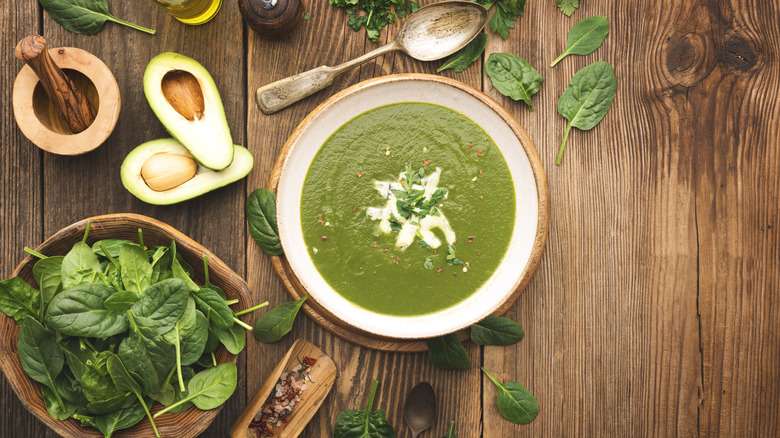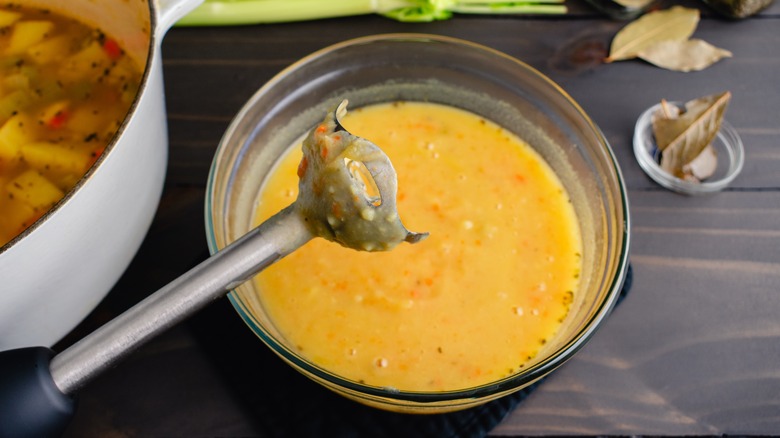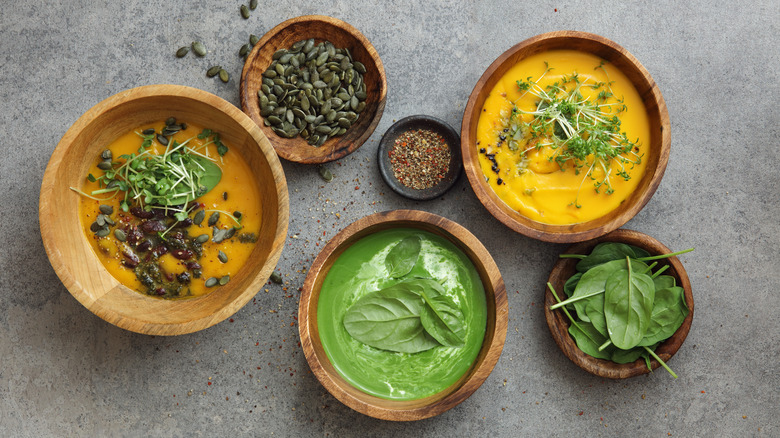You're One Puree Away From Effortlessly Upgraded Soup
Soups are a favorite choice for meals for many reasons. They are often simple, easy, or quick to make, and some soup recipes even check all three boxes. Though as comforting as a bowl of soup can be, sometimes you want something a little more luxurious and creamy. Sure, you could throw in starches, grains, or dairy to thicken up your soup. But even the plainest of starches can add flavor to the final dish, much less the use of dairy. So, if you do not want to alter the soup's flavor, there is an incredibly easy solution: puree it.
To be more specific, puree the cooked components of the soup along with a bit of the stock, and then stir it all back in. Et voilà — a thicker and creamier soup, without any added ingredients. All you need is a blender, whether countertop or immersion, and you are all set. As a bonus, you will be able to mix in any ingredients that picky eaters might turn their noses up at.
How to puree ingredients when making soup
Pureeing can be incorporated at different points and in different ways during the soup-making process. Take this classic chicken noodle soup recipe as an example. After sauteing the vegetables, you can puree a portion of them with some broth before continuing with the rest of the steps. You can even puree a little bit of the cooked chicken, making the soup even easier to eat.
If using a countertop jug blender, turn off the flame and let the ingredients cool for a few minutes. Then, blend a few ladlefuls at a time so that the blender does not splatter hot liquid all over the kitchen. If using an immersion blender, make sure that the level of liquids is above the blade guard to also prevent splatter. Immersion blenders can be more powerful than you think; take care to puree just enough to thicken the soup. At any of these points, you can also opt to puree all (instead of some) of the ingredients together for a soup that is totally smooth, creamy, and delightful to eat.
Upgraded texture, taste, and nutrition
Pureeing is a delicious way to mix in ingredients that some folks might not readily enjoy. This is especially true for young children who are still learning to eat vegetables, or for folks who have sensory aversions to particular textures. Take a cue from popular "cream of" soups, like mushroom, broccoli, and asparagus. In these soups, cooked vegetables are pureed with cream to make deliciously luxurious dishes. Following this method and logic (though without the cream), mixed textures of many soups can be cleverly altered into more homogeneous textures for easy eating — a triple upgrade of smooth consistency, camouflaged taste, and added nutrition.
Try this puree method with any particularly chunky soup recipe, such as this vegetable soup. Your diners will likely lick their bowls clean, and the best part is, you don't even have to disclose that there are peas and beans in it.


